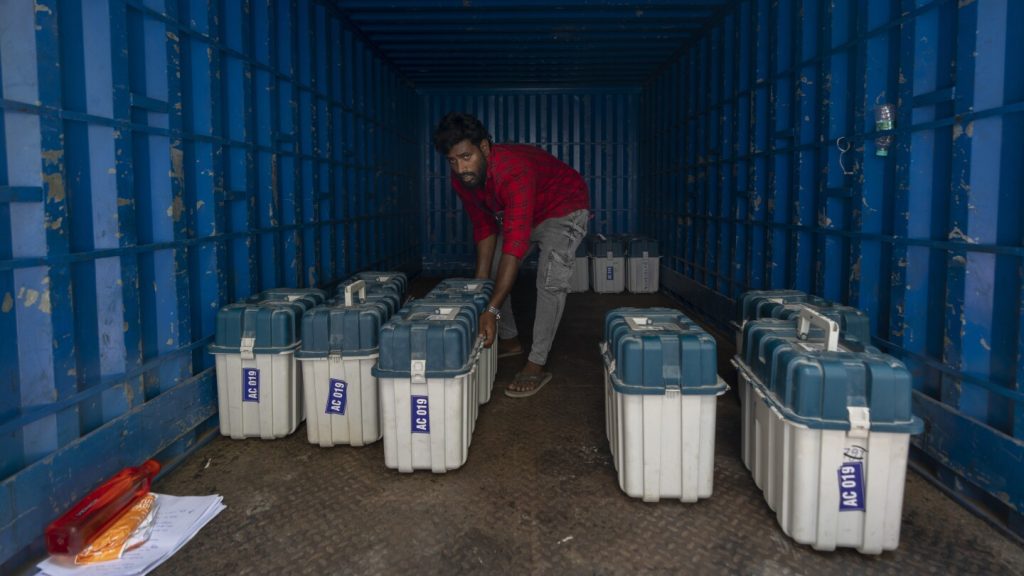Helicopters, buses, trucks, boats, donkeys, and mules are being used by Indian officials to transport electronic voting machines for the country’s enormous national elections. Set in motion last week, this seven-phase election is expected to conclude on June 1 and will see the participation of nearly 970 million voters choosing 543 members of Parliament. In Tamil Nadu, four donkeys were utilized to transport the machines to a remote location, while officials in West Bengal had to rely on porters to reach a village situated at a high altitude where mules were banned due to concerns about the spread of viral diseases.
The use of electronic voting machines in India has been in place for over two decades, with voters required to press a button against their chosen candidate or party symbol displayed on the screen. The variety of party symbols include a lotus, hand, bow, arrow, pressure cooker, hammer, sickle, kettle, balloon, and torch. Each electronic voting machine comprises a ballot unit, a control unit for official monitoring, and a VVPAT unit that produces a paper slip for vote verification if necessary.
Despite the widespread adoption of electronic voting machines, opposition parties like the Congress and Communist Party of India have expressed skepticism and called for a return to paper ballots, citing concerns about potential manipulation of the machines. They have approached India’s Supreme Court with their grievances but have not yet achieved success. The Election Commission of India has defended the integrity of its voting machines, asserting that they are standalone devices not connected to any network or the internet, thereby minimizing the risk of hacking by external devices.
The logistical challenges faced by election officials are immense, with the need to transport voting machines to some of the most remote and inaccessible parts of the country. In areas like the Himalayas and Andaman Islands, officials have had to navigate through jungles, snow-covered tracks, and rivers to establish polling stations in makeshift structures like tents and shipping containers. With the sheer scale of the operation, involving the mobilization of resources ranging from helicopters to mules, the success of India’s national elections hinges on the efficient deployment of electronic voting machines to ensure a smooth and accurate voting process.
The staggered nature of the elections allows for a gradual and systematic approach to covering the vast geography and diverse population of India. Notably, the votes will be counted on June 4 after the completion of all seven phases of voting. The use of multiple transport modes, from helicopters to donkeys, underscores the commitment of election officials to ensure that every eligible voter in the country has the opportunity to participate in this democratic exercise. As the world’s most populous democracy, India’s national elections serve as a testament to the logistical prowess and determination of election officials in facilitating a fair and transparent electoral process.


